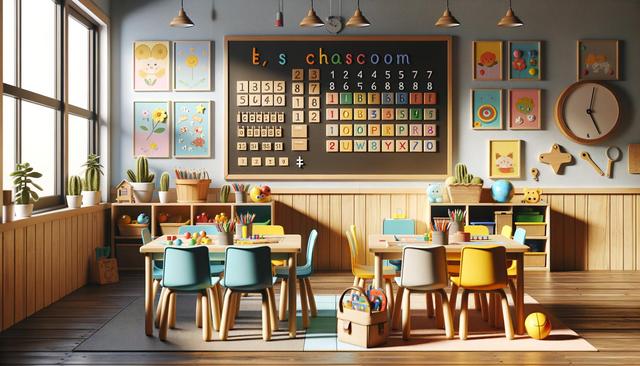
Creative Preschool Classroom Ideas to Spark Learning and Joy
Creating a Welcoming Environment
A preschool classroom should feel warm, safe, and inviting from the moment a child walks in. Young learners thrive in environments that balance stimulation with calmness, so consider using soft lighting, neutral tones, and pops of color to define learning areas. Cozy reading nooks with floor cushions and low shelves filled with age-appropriate books encourage independent exploration. Displaying student artwork at eye level not only personalizes the space but also fosters pride and ownership. Plants or child-friendly nature displays can also bring a sense of calm and connect children to the natural world.
Creating a welcoming atmosphere also means thinking about accessibility. Arrange furniture with wide pathways to ensure children can navigate the room independently. Clear signage with pictures and words can support early literacy and help children recognize where items belong. Lastly, ensure that personal storage spaces, like coat hooks or cubbies, are labeled and reachable, reinforcing a sense of routine and responsibility.
Designing Interactive Learning Centers
Learning centers are a cornerstone of preschool education. These areas should be thoughtfully designed to promote hands-on exploration and development across various domains. Some essential centers to include are:
- Art Station: Stocked with crayons, markers, paper, glue, and safety scissors to encourage creativity.
- Dramatic Play: Dress-up clothes, play kitchens, and puppets support imaginative play and social skills.
- Science and Nature: Magnifying glasses, natural specimens, and simple experiments spark curiosity.
- Building Area: Blocks, magnetic tiles, and construction toys enhance spatial awareness and problem-solving.
Each center should be clearly defined, with visual boundaries like rugs or shelves. Rotating materials regularly keeps the environment fresh and encourages new ways of thinking. Be sure to include labels and visuals in each center to build vocabulary and reinforce routines.
Incorporating Sensory-Friendly Spaces
Preschool classrooms can sometimes be overwhelming for young learners, especially those with sensory sensitivities. Including a quiet corner or sensory break area can be beneficial for children who need a moment to self-regulate. This space can be equipped with soft pillows, noise-canceling headphones, sensory bottles, and tactile materials like textured fabrics or fidget tools.
In addition to designated sensory areas, classroom materials can be selected with sensory needs in mind. For example:
- Offer a variety of textures in art supplies and manipulatives.
- Use soft, natural lighting rather than harsh fluorescent lights.
- Incorporate calming sounds or gentle background music during quiet times.
These thoughtful features not only support sensory development but also promote an inclusive learning environment where all children can thrive.
Encouraging Independence and Responsibility
One of the key goals in a preschool setting is to nurture independence and a sense of responsibility. Classroom design can support this by making materials accessible and organizing routines that empower children to take ownership of their learning. For instance, labeling bins and shelves with both pictures and words helps children know where items belong and encourages clean-up after activities.
Daily routines and visual schedules can guide children through transitions and reduce anxiety. Create job charts with rotating responsibilities like line leader, helper of the day, or snack distributor. These roles foster a sense of community, build confidence, and teach accountability. Additionally, consider:
- Using step-by-step charts for tasks like handwashing or putting on jackets.
- Providing low sinks and stools to encourage self-care and hygiene.
- Designing snack and meal areas that allow for child-led serving and clean-up.
By embedding opportunities for choice and contribution throughout the day, children learn essential life skills in a supportive setting.
Integrating Cultural and Community Connections
A preschool classroom can be a powerful space for celebrating diversity and building connections to the broader community. Including multicultural books, dolls, music, and art materials helps children see their own backgrounds reflected and introduces them to the rich variety of people and traditions around them. Invite families to share aspects of their culture through stories, songs, or food to enrich the curriculum.
Community connections can also be nurtured through local partnerships. Consider organizing visits from community helpers like firefighters, librarians, or veterinarians. Displaying a classroom map or photo wall of community places children visit helps them relate their learning to the world around them. Other ideas include:
- Creating a family board with photos and names to promote belonging.
- Celebrating holidays and customs from various cultures in age-appropriate ways.
- Using classroom themes that reflect real-world experiences and community events.
By weaving cultural awareness and community ties into the classroom design, educators help children develop empathy, respect, and a sense of global citizenship from an early age.